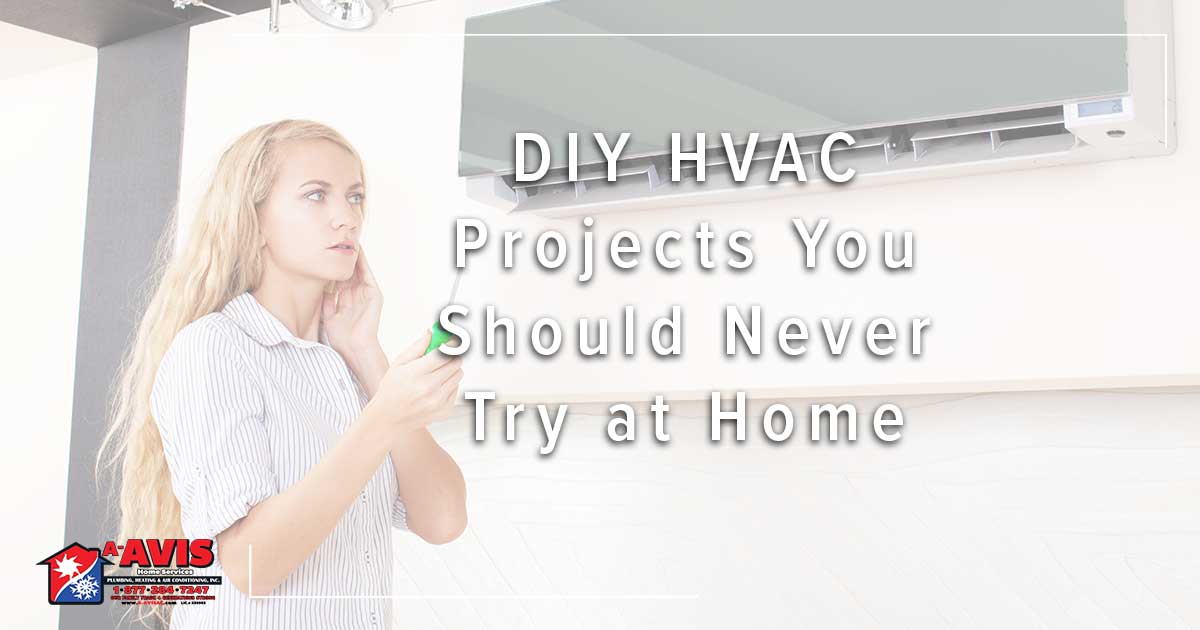Being handy at home is something nearly all homeowners enjoy. However, it’s important to know when to call in the pros. It’s not pretty when our techs are called in to fix attempted DIY HVAC projects.
While there may be a ton of YouTube videos telling you exactly what to do, that will never compare to the level of experience, professional knowhow, and specialized tools a certified HVAC technician will have.
For effective AC repair and service, you need to call in a professional.
Reasons You Shouldn’t Try to DIY HVAC Repairs
Carbon Monoxide
The biggest reason the average homeowner shouldn’t try any DIY HVAC projects is because working with heating and cooling systems can be incredibly dangerous because of the potential for carbon monoxide exposure.
Any sort of badly repaired line or gas leak can cause carbon monoxide to fill your home. This could put you, and your family, at extreme risk.
Electrical Danger
Another thing that can cause gratuitous bodily harm is high voltage electricity – just like the electric work used in your HVAC system.
HVAC systems have electrical wiring that should only be handled by a professional who’s had extensive training. The last thing we want is a client hurting themselves over a tune-up or small fix.
Issues with Insurance and Warranties
Most home insurance policies and company warranties will not cover any DIY HVAC work. A badly done DIY job can void your system warranty.
Most of these polices have language saying repairs must be done by a trained and licensed professional. Doing the fixes yourself can cost money in the long run and even make it hard for your to find new homeowners insurance.
DIY HVAC Repairs that Usually Go Wrong
Changing the Thermostat
Changing the thermostat sounds easy enough, right? Unfortuantely, that answer is wrong. Especially when it comes to a smart thermostat.
We’ve seen a lot of customers purchase a smart thermostat, try to install it and realize it just doesn’t work. An easy answer for this is that their HVAC equipment might be too old and can’t properly communicate with the advanced thermostat.
Another issue we see is electric. Thermostats need to be wired correctly or they won’t work. When a professional HVAC tech comes to your home to install a thermostat, they also make sure the wiring isn’t damaged or frayed. Then the easy part if just programming your new thermostat.
Blocking Room Vents
For some reason people think that by closing the vents to a room they don’t use will help save energy and lower their bills.
This “quick fix” can actually end up costing you a lot in the long run. A closed vent means the HVAC system is still producing enough air to cool your home, but now that air has nowhere to go.
In turn, this extra air just creates more pressure in your system which can raise your utility bills and even put a hole in your ductwork.
Cleaning the Outdoor Condenser
Even though your condenser looks like a big, tough piece of machinery, the coil inside is actually quite delicate.
We’ve seen homeowners think that they can just spray down the outside of the unit to get it nice and clean. Instead, when you spray a hose at it from the outside, you run the risk of twisting and bending the coils. Essentially rendering them useless.
What you Can Do
Clean Around the Condenser
Your condenser is the only part of your HVAC system that’s exposed to the elements all year long. While you don’t need to put a cover over your unit when it’s not in use. Cleaning around it is great.
At Service Champions, our technicians are constantly cleaning leaves, dirt, and other garden debris out of condensers. For a DIY HVAC project, we recommend regularly cleaning around your condenser to prevent any foreign objects from getting in.
Change the Air Filter
Changing the air filter in your HVAC system is easier than most would think. The hardest part is accessing an attic unit.
Our Service Champions techs recommend changing the air filter at least twice every year. Once in the spring before furnace season, and once in the fall before AC season.
We also recommend checking your air filter periodically if you live in a home with lots of shedding pets, live close to a construction site, and after fire season.
Battery Checks
Things like thermostats and carbon monoxide detectors are amazing safety tools and should be treated as such. One of the best things you can do for these tools is to check their batteries once every few months.
A thermostat is only good if it continues to work. The same can be said for a carbon monoxide detector.


